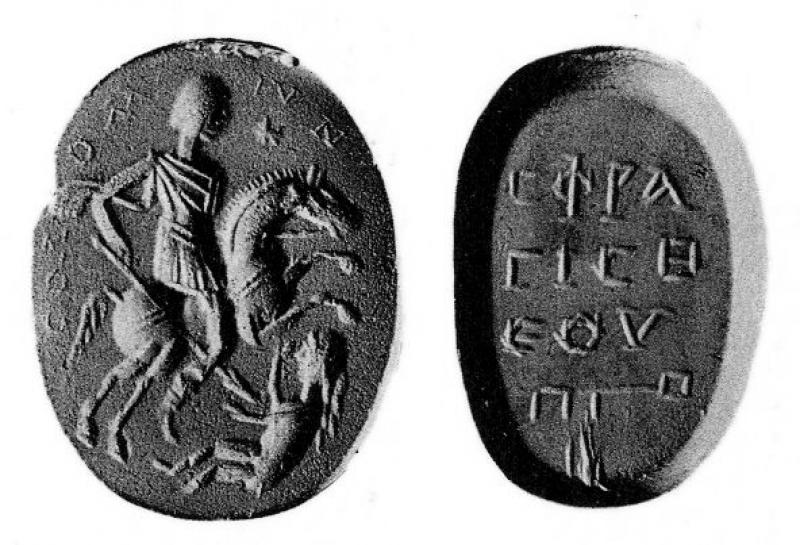Bonner, SMA, 208.
CHAPTER XV
PALESTINIAN, SYRIAN, AND CHRISTIAN AMULETS1
In Chapter II, “National Elements and Influences,” mention was made of two amulets, apparently of Jewish origin, on one of which the seven-branched candlestick was engraved, on the other the ark of the covenant with its cherubim. They might have been made and worn by Jews; and archaeologists working in Semitic areas have found and published other purely Jewish amulets with characteristic forms and Hebrew or Aramaic inscriptions. Only a few such objects will be treated in this chapter, and those only because they are unpublished. Here we are to be concerned chiefly with some designs that were developed under Jewish inspiration, but represent a Judaism touched by Hellenistic influences and ready to use a magic which was not free from pagan elements. Amulets that had such origins were taken over by Christians, who eliminated their pagan and Jewish characteristics, or else gave them a Christian interpretation.
The first group that claims attention consists of seven unpublished stones, which I have examined minutely;2 a few previously published specimens;3 and a few in the British Museum, which I inspected cursorily. The type represented by these stones may be described as follows. A youthful rider galloping to the right is about to pierce with his spear a prostrate female figure which lifts its hands in a vain attempt at supplication or defense. The rider's head is bare, his hair confined by a band. He wears a chlamys fastened on his right shoulder, with a loose end flowing out behind him; a kilt, riding boots, and, apparently, close-fitting trousers — this detail remains uncertain because of the imperfect workmanship which, in varying degrees, characterizes the whole series. Round the chest and the haunches of the horse are two parallel straps, which are intended to hold the saddlecloth or pad in place;4 the parallel incisions may, of course, represent a single broad
1 I trust that no offense will be taken at the use of the words “Christian amulets” in this chapter and elsewhere. Christians and pagans alike often wore upon their bodies objects made in similar forms and of the same materials, though adorned with different images and symbols. Among the spiritual-minded of both camps there was no thought of magic. But the idea of a protection derived from a super-human source is associated with many ring stones and pendants, whether pagan or Christian. It was not to be expected that all wearers of such objects would keep their minds clear of the feeling that power pro-ceeded from the thing itself, regardless of the wearer's religious attitude. The term “Christian amulets” is freely used by Dom H. Leclercq, who has given the best survey of them in his article “Amulettes” in the Dictionnaire archéologie chrétienne.
2 These stones are Mich. 26092, 26135, 26140; Newell 10, 37; one in the collection of D. M. Robinson; and one in mine; see D. 294–295–296–297.
3 See Schlumberger, REG 5 (1892), 84, No. 13; De Ridder 3491; Mouterde, “Le Glaive de Dardanos,” p. 96, No. 24; Matter, Pl. 8, 10—11. No. 10 is apparently identical with Chabouillet 2219.
4 This detail of a horse's equipment seems to have originated in the Orient; it appears in the West in the Roman imperial period. See Daremberg-Saglio, article “ephippium,” figs. 2690, 2691; Pauly-Wissowa, V, 2857.
Last modified: 2012-11-01 23:11:46
Link: cbd.mfab.hu/pandecta/1653


